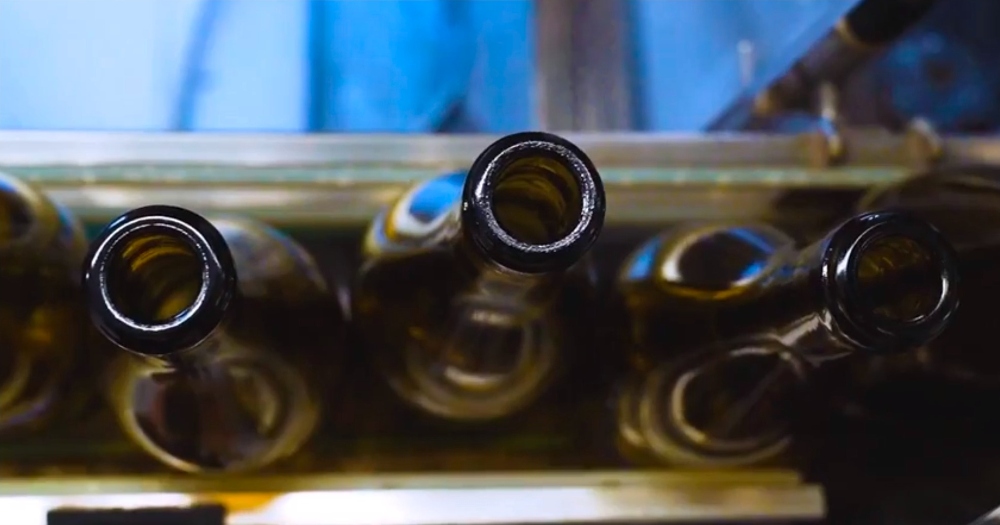Orange wines have become a favorite of small winery start-ups eager to set a distinctive course in a sea of well-established veterans. Going orange allows new wineries to break loose from the varietal handcuffs in a state such as Oregon, which has struggled to establish a ‘signature’ white wine (although many very fine white wines are produced). These wines seem to please many young consumers, some new to wine, some just eager to explore different options than the stuff their parents and grandparents poured.
On the plus side orange wines, which are made by leaving white wine grapes to ferment on their skins rather than being pressed off immediately, offer a range of scents and flavors that can seem unbounded. But along with that comes the question “what am I supposed to taste?” which is difficult if not impossible to answer. With varietal wines and even most blends, there are specific characteristics derived from the grape or grapes that can be identified as typical. Although a Chardonnay, for example, may be made in a wide range of styles, it nonetheless is (or should be) identifiably different from a Riesling or a Sauvignon Blanc. But an orange wine sheds the varietal frame and takes on a life of its own.

The practice of fermenting white grapes on the skins (optimally in amphorae) is far from new, but its most recent renaissance is traced to a man named Joško Gravner, who began using ancient winemaking techniques to make such wines in northeastern Italy’s Friuli-Venezia Giulia region some decades ago. His wines, which command high prices, are put through a detailed, all-natural regimen of fermenting in amphorae and neutral wood, then given many years of additional aging prior to release.
Here on the west coast there is more urgency to get these orange (or amber) wines made and released, so the examples that I’ve had the chance to taste are no more than a couple of vintages old. It’s difficult to describe these wines to people unfamiliar with them, and if you are not willing to explore new and often startling flavors you may find them unpalatable. But consider this – a white Pinot Noir is sort of a mirror image of an orange wine. It’s a white wine made from a red grape by pressing it immediately off the skins. Whereas its opposite is a lovely amber-hued wine made by not pressing a white grape before fermenting it.
I’ve enjoyed a number of orange wines from Day and Troon, but had my first taste of an example from Santa Barbara County just this week. My friend Matt Kettman, who writes for the Santa Barbara Independent and reviews Central Coast wines for Wine Enthusiast magazine, brought a bottle of Marbeso 2022 Magic Hour to a dinner party hosted by our good friends with whom we’d been staying. I’m a fan of Matt’s ‘Full Belly Files’ – a weekly e-blast covering a variety of wine and brew and restaurant happenings in the region. In a recent post he’d recounted a visit to a winery that produced no fewer than nine different orange wines, and when we planned our dinner meeting I asked if he’d bring a favorite example.

The Marbeso ‘Magic Hour’ 2022 was his choice, and bore this intriguing description on its back label: “This wine is the orange love child of Grüner Veltliner and Albariño after a secret harvest rendezvous. Skin contact lures poached pear, pomelo and Meyer lemon into a dance of seduction while providing incredible structure and a coastal sunset hue. 50% Grüner Veltliner, 50% Albariño.”
It was everything a really well-made orange wine should and can be. Aromatically complex, smooth on the palate, lingering, textural and beautifully balanced. It reminded me not at all of either of the two grapes as they are usually found; it was its own unique product. And once again proved that wine, in all its manifestations, can still surprise, intrigue and inspire the adventurous spirit.
Featured Wine

Troon 2022 Kubli Bench Amber
This might well be mistaken for Gewurztraminer, given the floral perfume that leads the taster in that direction. The listed blend is 70% Vermentino, 25% Viognier and 5% Roussanne – no Riesling as in previous vintages. It’s a lovely, low alcohol sipping wine, an elegant wine with flavors of flowers and Asian spices. The finish lingers gracefully, adding highlights of clove and citrus peel Try it with cold noodle dishes or chopped salads. 300 cases; 12.6%; $35 (Applegate Valley) 92/100
Discover more from Post Alley
Subscribe to get the latest posts sent to your email.

Interesting. Much appreciated. Thanks for the insights.